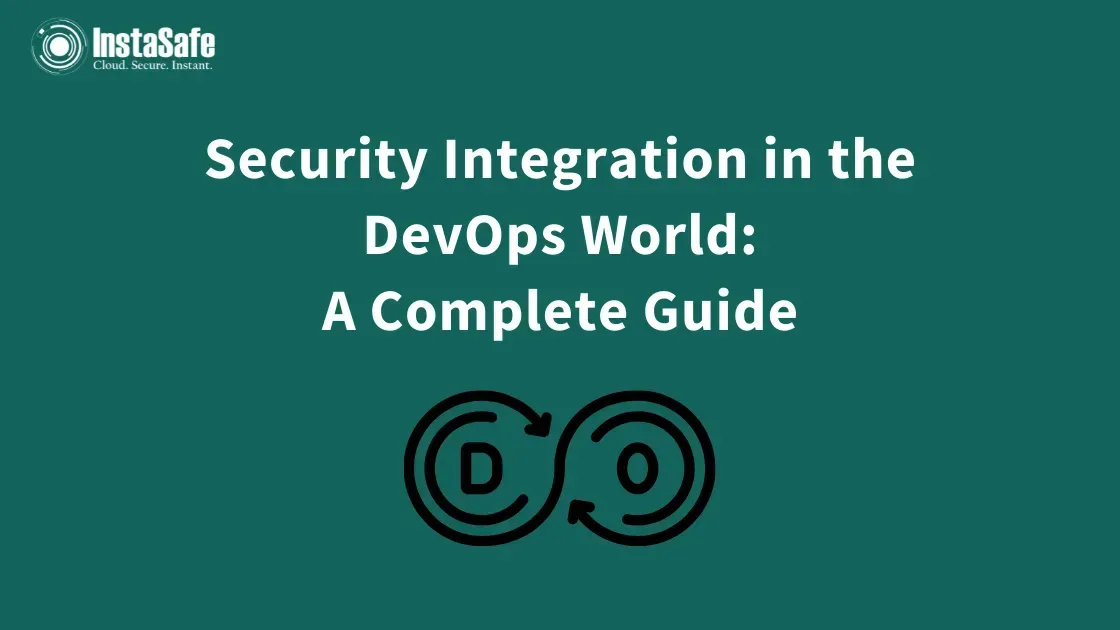Security Integration in the DevOps World: A Complete Guide

Software development and deployment pace have dramatically increased over the past few years. While developers carried out deployments manually in the past, DevOps models have automated the deployment and sped up the processes significantly.
DevOps combines IT operations and software development to reduce the Software Development Lifecycle (SDLC) and ensure continuous software delivery with high quality. Thus, it optimises software development and helps ensure maximum operational efficiency.
If implemented correctly, DevOps provides multiple benefits to the organisation, including better team collaboration, a faster marketing pace, enhanced overall productivity, and improved customer satisfaction.
However, while all these benefits are crucial, it’s also important to prioritise DevOps Security and ensure your efforts don’t go in vain. This article shows DevSecOps and how you can integrate security into your DevOps operations. Let’s begin!
What Is Security In DevOps?
Before DevOps, security was deemed less important and was carried out at the last stage of the SDLC process. This was because the primary focus was only the software development. So, finding a security threat or vulnerability at the last stage meant going through and working through the endless lines of codes, which is time-consuming and laborious.
This is where DevOps security integration plays a major role. It includes integrating the best security practices in the DevOps pipeline. In DevSecOps, security is a “shared responsibility,” which automates and scales the security decisions faster.
It’s important to align your software development and security practices to ensure:
- Costs don’t increase
- There isn’t a decline in quality
- Data and applications breach risks are lower
Now, let’s get into integrating security into DevOps and how to go about it.
How To Integrate Security Into DevOps Successfully?
Here are some essential tips for integrating security best practices into DevOps.
Modify the security mindset
For a long time, developers didn’t prioritise or consider security the most important factor as they focused more on delivering quality user experiences and enhancing the application’s performance.
Thus, it’s important to change this security mindset of your DevOps teams. Here are some tips for the same:
- Security professionals and development teams should collaborate to prioritise security and develop a relevant cybersecurity solution to prevent security risks and vulnerabilities.
- The DevOps teams should use collaborative applications and security tools or DevOps, like Slack, for effective team cooperation and communication for higher reliability and performance.
- It’s important to conduct training programs to make developers aware of the cybersecurity risks and teach them the best security practices.
Prioritising security in the DevOps pipeline is the first integration step in ensuring maximum security.
Getting buy-in from stakeholders is important
You can make security a top priority of your organisation with buy-in from executive stakeholders and promote a culture that highly values and prioritises security.
Thus, make sure you get buy-in for security software and applications to highlight their security importance and minimise the security incidences in your organisation.
Use security as a code
Automation is the most important factor in integrating DevOps and security. Thus, you must remove the manual intervention of handling security and ensuring continuous delivery at scale.
You must script compliance and security as available services, integrate the scripts into your DevOps pipeline, and teach them to enforce the developed security policies.
Be highly responsive to the security risks
Having a 100% secure release and ensuring 100% uptime isn’t always optimal and possible.
Hence, no matter how many security practices you implement to prevent and minimise risks, it’s also important to be as quick and responsive towards handling the security risks as possible to resolve the issues. This helps further resolve the risks and save costs.
Conclusion
Integrating security into DevOps and optimising development and operational workflow is important to ensure secure software delivery. Thus, implement the tips mentioned above, encourage effective communication and collaboration between your security and DevOps teams, and create a reactive approach toward solving security issues. Check out our secure DevOps access solution at the InstaSafe company to enable DevOps security securely. Secure your SSH connections, RDPs, web and SaaS applications, and more. Check the pricing and make sure to book a demo to learn more.
Key Products
Zero Trust Application Access | Zero Trust Network Access | Multi Factor Authentication | IAM Identity And Access Management | Secure Enterprise Browser
Key Features
SSO Single Sign On | Endpoint Security | Contextual Based Access Controls | Always On VPN Connection |Clientless VPN | Device Binding | Device Posture Check | Domain Joining
Key Solutions
VPN Alternative Technology | Secure Remote Access Solutions | Cloud Application Security | DevOps Security | VoIP Security Solutions
